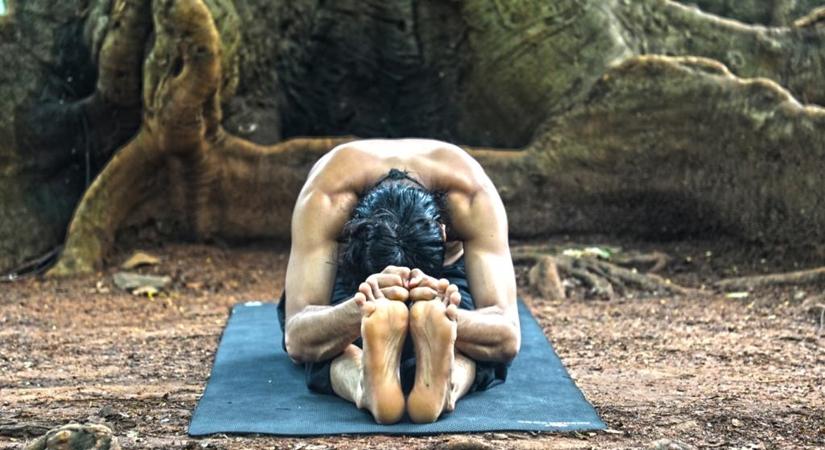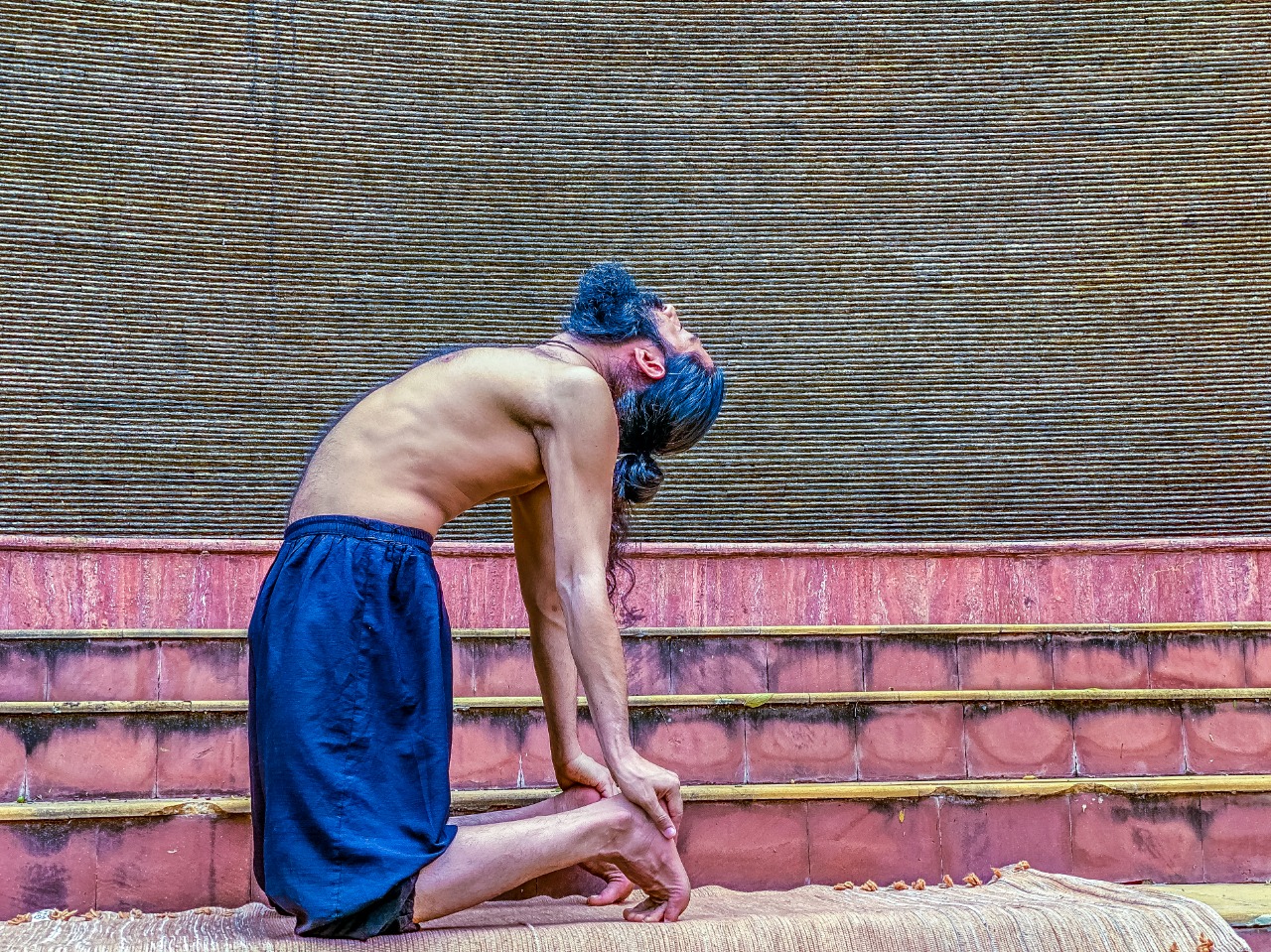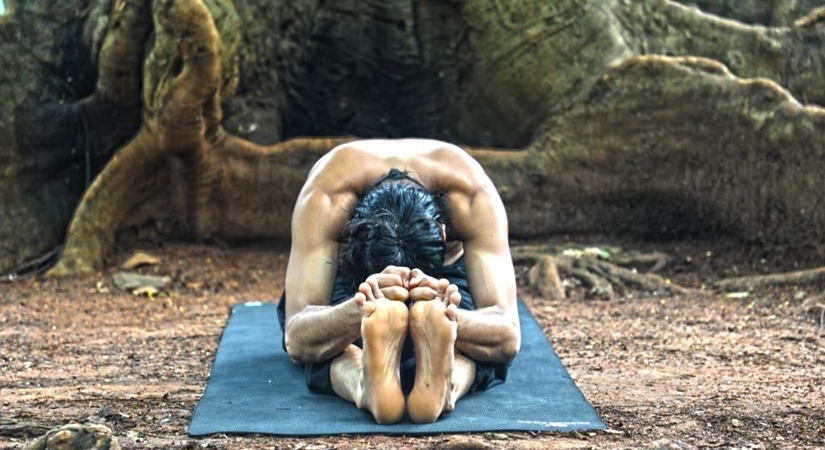Cover Story
Quit tobacco with yoga

Yoga practices such as asanas, and meditation also rewire the brain creating new neural pathways that are effective for new behaviour-forming habits, breaking old patterns
ByIANSlife
May 26, 2020 (IANSlife) There are more than 8 million people who die from tobacco related causes each year. Of these, over 7 million die as a result of direct tobacco use while around 1.2 million are non-smokers exposed to second-hand smoke. Smoking is decidedly bad for your health and harms nearly every organ of the body.
Smoking causes damage to blood vessels making them thicken and grow narrower. This increases heart rate and your blood pressure. Smoking also causes many other cancers and health problems. Women who smoke during pregnancy face a greater risk of certain pregnancy problems.
An effective cure to addiction is the practice of yoga and meditation. Yoga offers tools to down-regulate the stress response system and activate the relaxation response. This increases our capacity to observe our experiences with a greater sense of level-headedness and self-control. Yoga practices such as asanas, and meditation also rewire the brain creating new neural pathways. These are effective for new behaviour-forming habits, breaking old patterns to replace them with healthier ones. In this way yoga can help in de-addiction, and also regain the body’s health by boosting your immune system, building strength for both body and mind, and flushing out toxins.
One of the main reasons that people find it a challenge to give up smoking is because of nicotine. Nicotine is a stimulant drug and a highly addictive substance that is found in tobacco. Nicotine addiction makes it much harder for people to quit smoking. But it is important to remind oneself of the dangers of smoking and stay committed to quitting the habit. Yoga asanas release feel-good hormones in your body and lead you to make positive lifestyle changes. Yoga also builds mindfulness, and this awareness can be useful to keep yourself in check every time you reach for a cigarette.
Practice the following asanas upto three times or more a week, repeat for up to three sets holding each pose for 15-30 seconds.
Ustrasana

- Kneel on the yoga mat and place your hands on the hips.
- Simultaneously, arch your back and slide your palms over your feet till the arms are straight.
- Do not strain or flex your neck but keep it in a neutral position.
- Stay in this posture for a couple of breaths.
- Breathe out and slowly come back to the initial pose. Withdraw your hands and bring them back to your hips as you straighten up.
Vajrasana - Thunderbolt pose

Formation of the Posture
- Begin by standing straight with your arms by the sides of your body
- Lean forward and slowly drop your knees on your mat
- Place your pelvis on your heels and point your toes outward
- Here, your thighs should press your calf muscles
- Keep your heels slightly apart from each other
- Place your palms on your knees facing upward
- Straighten your back and look forward
- Hold this asana for a while
Breathing Methodology
Softly inhale and exhale
Word of Advice
A person suffering from knee joint pain, Arthritis or any knee injury should avoid this asana
Paschimottanasana - Seated forward bend

Formation of the Posture
- Begin with Dandasana
- Ensure that your knees are slightly bent while your legs are stretched out forward
- Extend your arms upward and keep your spine erect
- Exhale and empty your stomach of air
- With the exhale, bend forward at the hip and place your upper body on your lower body
- Lower your arms and grip your big toes with your fingers
- Try to touch your knees with your nose
- Hold the posture for 10-30 seconds, repeat up to 3 times
Breathing Methodology
Exhale as you fold forward
Padahastasana

Formation of the posture
- Begin by standing in Samasthithi
- Exhale and gently bend your upper body, dropping your head and keeping your shoulders and neck relaxed
- Bring the trunk closer to the legs. Try to touch the knees with the forehead. This may require a lot of flexibility. If you are starting out your practice, go only as far as it is comfortable.
- When you are folding forward, attempt to move your torso from the hip joints, instead of the waist.
- Place palms on either side of feet
- Try to keep the legs and knees straight throughout the practice. If you are a beginner, you may have to bend your knees slightly to accomplish this.
- With practice, slowly straighten your knees and try to touch your chest to your thighs
- Hold this asana for a while
Adho Mukha Svanasana - Downward dog pose
Formation of the posture
- Lift the hips up, straighten the knees and elbows, and form an inverted ‘V’ shape
- Now keep the hands shoulders width apart. Fingers point ahead
- Put pressure on your palms and open your shoulder blades
- Try to push your heels to the floor
- Keep your eye focused on your big toes
- Hold eight to ten breaths
Breathing Methodology
Exhale as you enter into this posture
(This article is a website exclusive and cannot be reproduced without the permission of IANSlife)
IANSlife can be contacted at ianslife@ians.in


